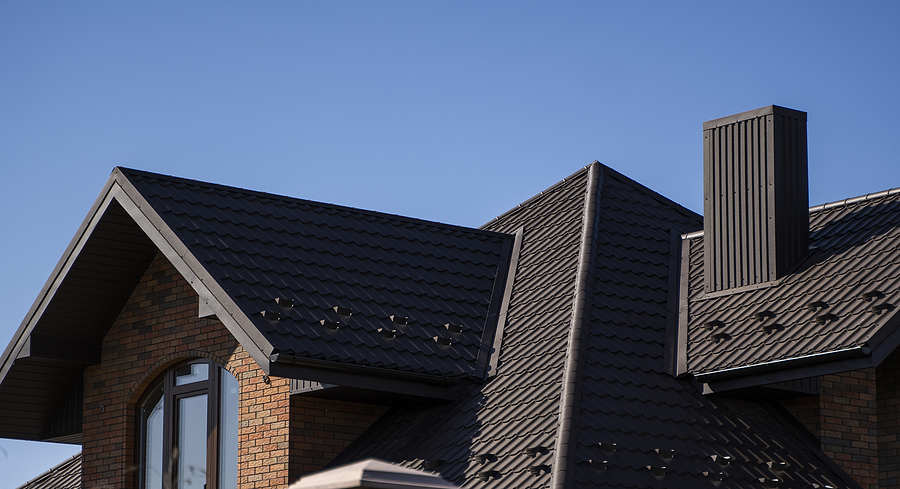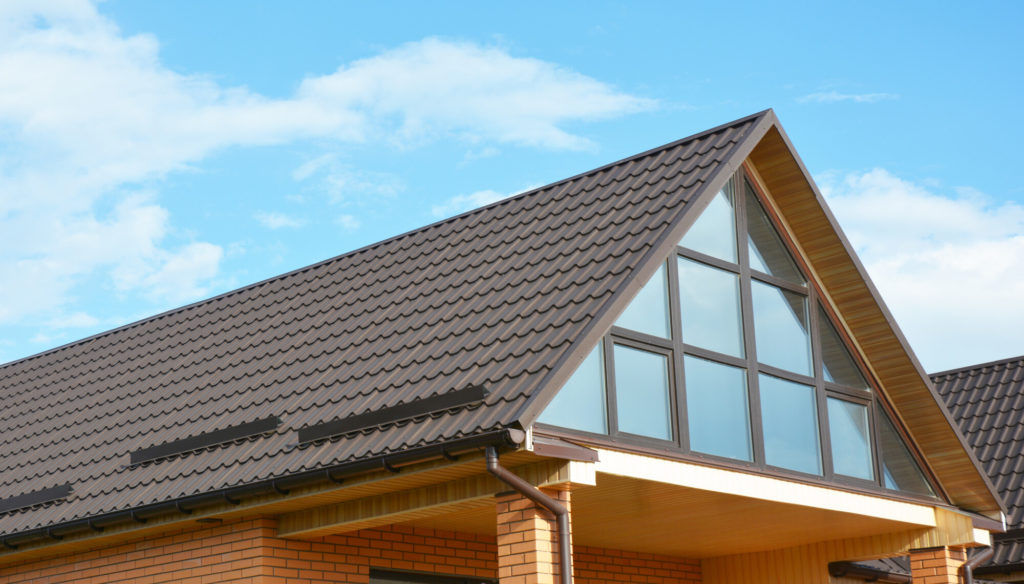
How Long Does It Take to Pay Off a New Roof? A Homeowner’s Guide
Investing in a new roof for your home is a significant expense. Whether you’re dealing with an old, deteriorating roof that urgently needs replacement or simply planning an upgrade for better energy efficiency and curb appeal, the costs involved can be substantial. One of the most common questions homeowners have is, “How long will it take to pay off a new roof?” The timeline to pay off a new roof depends on various factors, including the roofing material, the installation cost, financing options, potential energy savings, and even how insurance might help offset the expense. In this guide, we’ll explore these factors in detail and provide insights into financing options and how homeowners insurance can impact the overall cost.
Understanding the Costs of a New Roof
Before calculating how long it might take to pay off your new roof, it’s important to understand the different costs involved. The price of a new roof can vary significantly based on factors such as the type of roofing material, roof size, labor, and geographical location. Here’s a breakdown of the key costs you need to consider:
Roofing Material
The choice of roofing material plays a major role in the total cost. Here are some average price ranges for common roofing materials:
- Asphalt Shingles: $5,000 to $10,000 for a standard-sized home. This is the most affordable option and comes with an average lifespan of 20 to 30 years.
- Metal Roofing: $10,000 to $20,000. Metal roofs are more durable, lasting 40 to 70 years, and can provide better energy efficiency.
- Wood Shingles/Shakes: $10,000 to $20,000. Wood offers a classic look but requires more maintenance and has a lifespan of 30 to 50 years.
- Clay or Concrete Tiles: $15,000 to $30,000. These are highly durable and can last up to 100 years, but they come with higher upfront costs.
- Slate: $20,000 to $50,000. Slate roofs offer unmatched durability, often lasting over a century, but are among the most expensive options.

Labor and Installation
Installation costs vary depending on the complexity of the roof design, the pitch, and local labor rates. In general, labor accounts for about 40-60% of the total cost of a new roof. Roofs with steep slopes, multiple levels, or intricate designs will increase labor costs.
Additional Expenses
Additional expenses can include:
- Tear-Off and Disposal: Removing and disposing of old roofing materials can add to the overall cost, typically ranging from $1,000 to $3,000.
- Roof Deck Repairs: If the roof deck is damaged, repairs may be necessary before installing the new roof, potentially adding several hundred to a few thousand dollars to the project.
- Permits: Depending on your location, you may need to obtain a building permit, which can cost anywhere from $100 to $1,000.
Given these costs, it’s clear that a new roof is a major investment. Now, let’s dive into the potential ways to finance a new roof and how these can impact your payoff timeline.

Financing Options for Your New Roof
Paying for a new roof upfront isn’t always feasible for many homeowners. Fortunately, several financing options can make this significant investment more manageable. Understanding these options will help you choose the best way to fund your roof replacement and estimate how long it might take to pay off.
1. Cash Payment
Paying cash for your new roof is the simplest option if you have the savings. By paying the full cost upfront, you avoid interest payments and debt, reducing the overall expense. However, this option may not be viable if you don’t have enough savings to cover the cost, especially for higher-end roofing materials.
Payoff Timeline: Immediate. Since you’re paying cash, there’s nothing left to pay off in the future. The challenge here is having the available funds upfront.
2. Home Equity Loan or Home Equity Line of Credit (HELOC)
A home equity loan or HELOC allows you to borrow against the equity in your home. With a home equity loan, you receive a lump sum that you repay in fixed monthly installments over a set period, typically 5 to 15 years. A HELOC, on the other hand, works like a credit line you can draw from as needed.
Pros:
- Lower interest rates than personal loans or credit cards.
- Interest may be tax-deductible if used for home improvements.
Cons:
- Your home serves as collateral, which means failure to repay could put your property at risk.
Payoff Timeline: 5 to 15 years, depending on the loan term. You can adjust the timeline by choosing a shorter loan term or making extra payments to pay off the loan faster.

3. Personal Loan
If you don’t have sufficient home equity or prefer not to use your home as collateral, a personal loan might be a suitable option. Personal loans offer fixed interest rates and monthly payments over a specified term, usually 2 to 7 years.
Pros:
- No collateral required.
- Fixed monthly payments make it easier to budget.
Cons:
- Higher interest rates than home equity loans.
- Shorter repayment terms can result in higher monthly payments.
Payoff Timeline: 2 to 7 years, depending on the loan terms.
4. Roofing Company Financing
Many roofing companies offer in-house financing or partner with lenders to provide payment plans. These plans often include options for low or no-interest financing if you pay off the balance within a specific period (e.g., 6 to 24 months).
Pros:
- Convenient, with financing arranged directly through the roofing company.
- Potential for low or zero-interest promotions.
Cons:
- Limited time to pay off the balance to avoid high interest rates.
- Less flexibility compared to traditional loans.
Payoff Timeline: 6 months to 5 years, depending on the terms of the financing plan.
5. Credit Cards
Using a credit card to finance a new roof is generally not recommended due to high interest rates. However, if you have a credit card with a 0% introductory APR, it could be a short-term solution, provided you can pay off the balance before the promotional period ends.
Pros:
- No need for an application process if you already have a credit card with sufficient credit limit.
- Potential to earn rewards or cash back.
Cons:
- High-interest rates if the balance is not paid off during the 0% APR period.
- Risk of accumulating debt.
Payoff Timeline: Varies, but it’s advisable to pay off the balance within the 0% APR period (typically 12 to 18 months) to avoid high interest charges.

How Homeowners Insurance Can Offset Costs
If your roof replacement is due to damage from a covered peril, such as a storm, fire, or falling tree, your homeowners insurance policy might cover part or all of the cost. Understanding your policy and its coverage is key to knowing how much you might save.
What Homeowners Insurance Covers
Homeowners insurance typically covers roof replacement if the damage is caused by an unexpected event, such as:
- Storm damage (e.g., hail, wind, lightning)
- Falling objects, like tree branches
- Fire
However, insurance usually does not cover roof replacement due to general wear and tear, neglect, or age. Some policies may have exclusions for specific types of damage, like flooding or earthquakes, so it’s important to review your policy’s terms.
Filing an Insurance Claim
To file an insurance claim for roof replacement, you’ll need to:
- Document the damage with photos and a detailed description.
- Contact your insurance company to initiate the claim process.
- Provide an estimate from a licensed roofing contractor.
If your claim is approved, the insurance company will issue payment for the repair or replacement cost, minus your deductible.
Example: If your roof replacement costs $10,000 and your insurance deductible is $1,500, the insurance company will pay $8,500. You’re responsible for the remaining $1,500.
Payoff Timeline Impact
Having insurance cover part or all of the roof replacement cost significantly shortens the payoff timeline, as the out-of-pocket expense for you will be lower. However, even with insurance coverage, you may still need to finance the deductible and any costs not covered by the policy.

Energy Savings and Long-Term Payoff
A new roof, particularly one made of energy-efficient materials like metal or reflective shingles, can lead to lower energy bills. Improved insulation and ventilation provided by modern roofing materials can reduce the workload on your HVAC system, resulting in cost savings over time.
While the monthly savings on energy bills might not seem substantial at first, they add up over the years. This reduction in utility costs can contribute to the overall payoff of your new roof, especially when combined with other energy-saving home improvements.
Example: If your new roof reduces your energy bills by $30 a month, that’s an annual savings of $360. Over a 10-year period, this adds up to $3,600 in savings, effectively offsetting a portion of the initial roofing costs.
Estimating Your Payoff Timeline
To estimate how long it will take to pay off your new roof, consider the following steps:
- Determine Total Cost: Add up the total cost of the roof, including materials, labor, permits, and any additional expenses.
- Subtract Insurance Coverage: If applicable, subtract the amount covered by your homeowners insurance.
- Calculate Monthly Payments: Identify your monthly payments based on the financing option you choose.
- Factor in Energy Savings: Estimate your potential monthly energy savings and use this to offset your financing payments.
- Estimate Payoff Time: Divide the total out-of-pocket cost by your net monthly payment to determine how long it will take to pay off the roof.
The time it takes to pay off a new roof varies based on factors such as the roofing material, installation costs, financing options, insurance coverage, and potential energy savings. By carefully considering your financing choices and understanding how insurance may cover some of the expenses, you can make a more informed decision that aligns with your budget.
While a new roof is a significant investment, it also offers substantial benefits, including enhanced home protection, improved energy efficiency, and increased property value. With the right approach to financing and a clear understanding of the costs involved, you can enjoy the peace of mind that comes with a well-protected home and a manageable payment plan.

